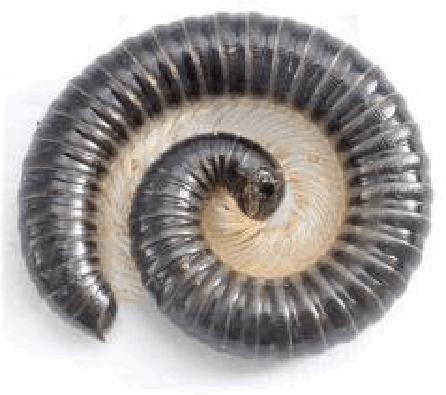Millipedes
Millipedes Millipedes in Kansas City Missouri
Pest control companies consider < p>Millipedes in Kansas City, Missouri as an occasional invader. Millipedes and centipedes are similar pests. They are not a threat to people or animals.
Centipedes tend to be larger in the south. A millipede’s legs are also shorter, and, in general, a millipede cannot move very fast. Millipedes have two sets of legs, called Diplopoda, for every segment. When they move, their legs appear to be moving in a wave-like motion. A centipede, called Chilopoda, with its fewer legs, can travel considerably faster. Centipedes can grow up to six inches or more in length. A centipede can be easily distinguished from a millipede because it has a centipede has one leg per body segment. A millipede has two legs per body segment.
Both centipedes and millipedes are generally hatched from eggs, but some varieties are born live. Some centipedes may live as long as six years.
Centipedes actually have the ability to bite and are poisonous. The poison from their fangs, located behind the head, is used to kill insects, which are their primary food. To a human, a bite feels like a bee sting and can be dangerous, especially if there is an allergic reaction in response to the bite. Children will be more sensitive to a centipede’s bite.
Millipedes are not poisonous and do not have fangs, but they can emit an obnoxious fluid to defend themselves. Some varieties can spray this fluid several inches. The fluid can irritate the skin in some people and should be removed right away. Additionally, it may take some scrubbing to get rid of the odor.
Millipedes feed on decaying plant matter and sometimes living plant roots. Millipedes can damage those roots if there are too many of the pests in the soil. Some varieties are known to be especially bothersome to greenhouse plants. If this occurs, you may need to contact a pest control agency to eliminate your millipede infestation.
House centipedes are an indoor variety. They can move quickly and do not require the moisture that the other varieties need. Centipedes are beneficial to the control of other insects, which may be a good reason to keep them around. The most likely time of year to see centipedes in your home is in the spring or fall.

Control for Millipedes
The key to controlling millipedes around your home is to reduce and somehow eliminate the home's moist areas.
- Dethatch the lawn
- Mow the lawn closely and edge to promote quicker drying
- Remove debris like leaves, wood debris, rocks, heavy mulch, and stored firewood.
- Water lawns in the early morning to allow for the grass to dry during the day.
Applications of residuals products can be made around your home's foundation wall and perimeter plant beds. In your basement and crawls spaces to help reduce the numbers in and around your home.

